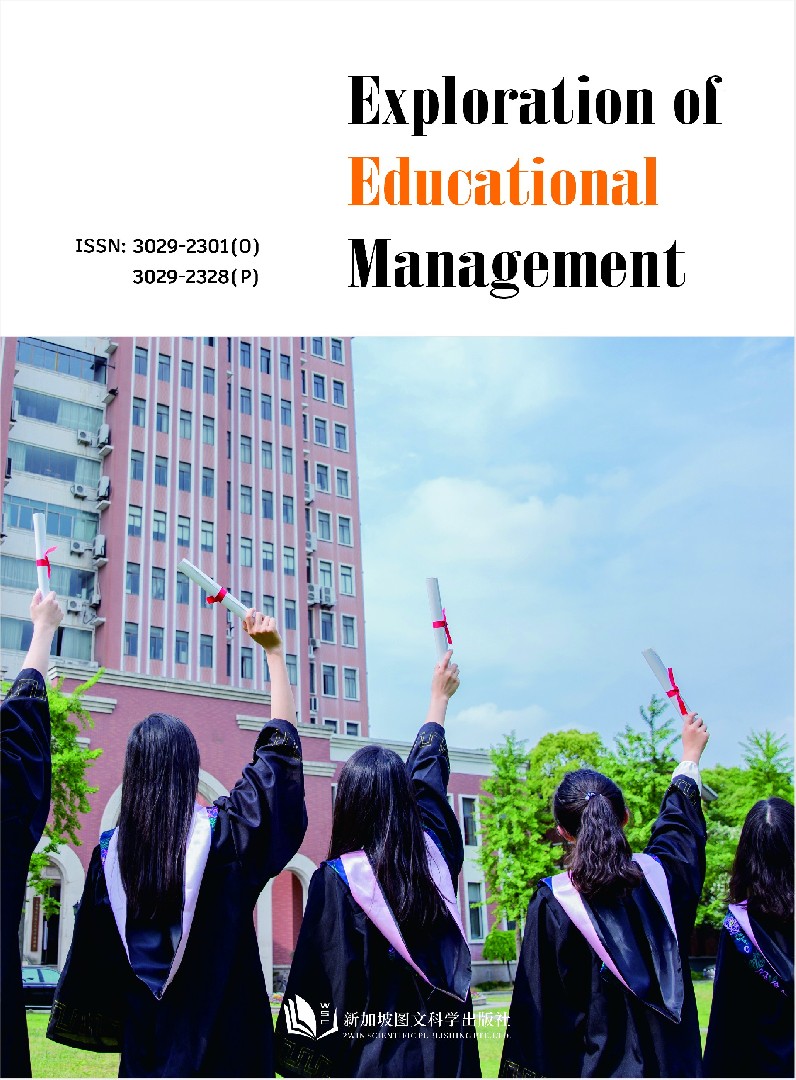作者
Yaqi Zhao
文章摘要
The article presents a comprehensive exploration into the feasibility and challenges of integrating Drama as an independent curriculum in an international high school located in Xi'an, China, targeting students from Grade 10 to 12. Recognizing the substantial pedagogical benefits of drama-based learning activities, such as enhanced English speaking and listening skills, creativity, communication competence, and empathy, the proposal delves into the complexities of curriculum development amid varying national policies and educational paradigms. It critically examines factors influencing the implementation of drama education, including local control, government initiatives, educational philosophies, funding, quality of content, teacher qualifications, and the socio-economic context of schools. Through a thorough literature review and analysis of the existing educational setup—including the school's adherence to the California Common Core State Standards and the need for incorporating Chinese textbooks—the article advocates for the autonomy and flexibility of drama education outside the conventional curriculum framework. It underscores the potential for drama education to foster a collaborative learning environment, facilitate linguistic and cultural awareness, and support the holistic development of students. Furthermore, the article highlights the strategic considerations for curriculum design, addressing the gaps between students' background knowledge and curriculum standards, particularly in ESL contexts. The proposal also touches upon exciting opportunities for students to gain drama certifications through online contests, enhancing their university application competitiveness. Overall, it posits that while there are substantial challenges, including funding, content provision, and teacher training, the inclusion of drama as an elective in the international school curriculum offers a promising avenue for educational enrichment and student development.
文章关键词
drama, curriculum design, California common core state standards, art education, teacher training, curriculum autonomy
参考文献
[1] ASDAN China, accessed 31 August 2023, .
[2] California Arts Education Framework. (2020). California Arts Education Framework for California Public Schools: Kindergarten Through Grade Twelve. Sacramento, CA: California Department of Education.
[3] California Department of Education. (2021). California Arts Standards for Public Schools, Prekindergarten Through Grade Twelve. Sacramento, CA: California Department of Education.
[4] Duffy, P. (2016). Theatre curriculum in the US: a great tasting sandwich on stale bread. Research in Drama Education: The Journal of Applied Theatre and Performance, 21(1), pp. 37–41.
[5] Donna, J. (2013). Secondary Drama: A Creative Source Book: Practical Inspiration for Teachers. London: Routledge.
[6] Goodlass, R. (2016). Drama and the Curriculum. NJ: Drama Australia Journal, 40(1), pp.3–14.
[7] Green, A. (2006). University to school: Challenging assumptions in subject knowledge development. Challenging English: studies in reading and culture, 13(1), pp. 111-123.
[8] Hennessy, L. (2016). A secondary school drama teacher's experience of drama in the curriculum in 2015. Research in Drama Education: The Journal of Applied Theatre and Performance, 21(1), pp.78–89.
[9] Kempe, A. & Holroyd, J. (2004). Speaking, Listening, and Drama. London: David Fulton.
[10] Kershaw, B. (1998). Pathologies of hope in drama and theatre. Research in Drama Education: The Journal of Applied Theatre and Performance 3(1). pp. 67-83.
[11] Laura, A. & Østerlind, E. (2011). ‘Drama has given me a home’: Perspectives of experienced secondary school drama/theatre students in two countries, NJ, 34(1), pp. 85-100.
[12] Rainer, J. & Lewis, M. (2004). Teaching Classroom Drama and Theatre: Practical Projects for Secondary Schools. London: Routledge.
[13] Marsh, C. & Willis, G. (2003). Curriculum: alternative approaches, ongoing issues. Prentice Hall.
[14] Østerlind, E. (2009). Swedish secondary school students and the theatre arts program. Paper presented at the 7th Drama Boreale Nordic Conference, August 2009, Vasa, Finland.
[15] O’Toole, J. (2014). “When Advocacy Meets Opportunity…What’s the Reality? Establishing Drama in the Curriculum.” In The Routledge International Handbook of the Arts and Education, edited by M. Fleming, L. Bresler, and J. O’Toole. 1st ed., pp. 185-193. London: Routledge.
[16] Pañares, A. A., & Cabangon, M. G. S. (2016). Drama-in-schools in the Philippines. Research in Drama Education: The Journal of Applied Theatre and Performance, 21(1), pp. 13–16.
[17] Pitfield, M. (2013). The impact of curriculum hierarchies on the development of professional self in teaching: student-teachers of drama negotiating issues of subject status at the interface between drama and English. Pedagogy, Culture & Society, 21(3), pp. 403–426.
[18]Stinson, M. (2009). Drama as Macro-Curriculum: Peeking Behind the Closed Doors of Drama Syllabus Development. In Drama and Curriculum. Landscapes: the Arts, Aesthetics, and Education, vol 6. pp. 169-182. Dordrecht: Springer.
[19] Tyler, R. W. (1949). Basic Principles of Curriculum and Instruction. Chicago: University of Chicago Press.
[20] Winston, J. (2004). Integrating Drama and English: Literacy and Oracy in action. English Drama Media 1(25), pp.9.
[21] Zeng, C. (2019). An overview of current trends in drama education in the People’s Republic of China. Research in Drama Education: The Journal of Applied Theatre and Performance, 24 (4), pp. 427-477.
Full Text:
DOI
